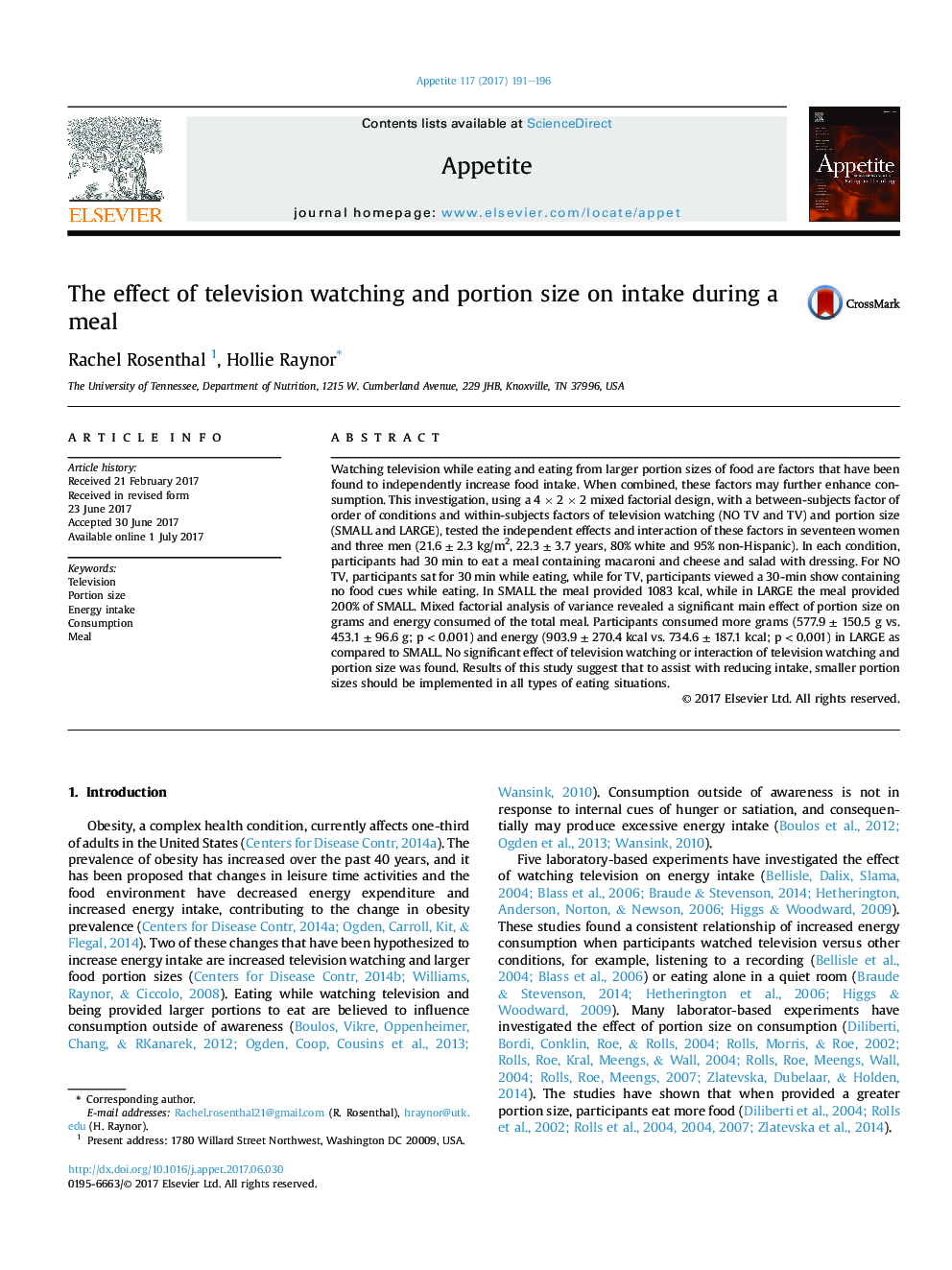| Article ID | Journal | Published Year | Pages | File Type |
|---|---|---|---|---|
| 5044074 | Appetite | 2017 | 6 Pages |
Watching television while eating and eating from larger portion sizes of food are factors that have been found to independently increase food intake. When combined, these factors may further enhance consumption. This investigation, using a 4 Ã 2 Ã 2 mixed factorial design, with a between-subjects factor of order of conditions and within-subjects factors of television watching (NO TV and TV) and portion size (SMALL and LARGE), tested the independent effects and interaction of these factors in seventeen women and three men (21.6 ± 2.3 kg/m2, 22.3 ± 3.7 years, 80% white and 95% non-Hispanic). In each condition, participants had 30 min to eat a meal containing macaroni and cheese and salad with dressing. For NO TV, participants sat for 30 min while eating, while for TV, participants viewed a 30-min show containing no food cues while eating. In SMALL the meal provided 1083 kcal, while in LARGE the meal provided 200% of SMALL. Mixed factorial analysis of variance revealed a significant main effect of portion size on grams and energy consumed of the total meal. Participants consumed more grams (577.9 ± 150.5 g vs. 453.1 ± 96.6 g; p < 0.001) and energy (903.9 ± 270.4 kcal vs. 734.6 ± 187.1 kcal; p < 0.001) in LARGE as compared to SMALL. No significant effect of television watching or interaction of television watching and portion size was found. Results of this study suggest that to assist with reducing intake, smaller portion sizes should be implemented in all types of eating situations.
